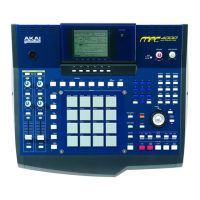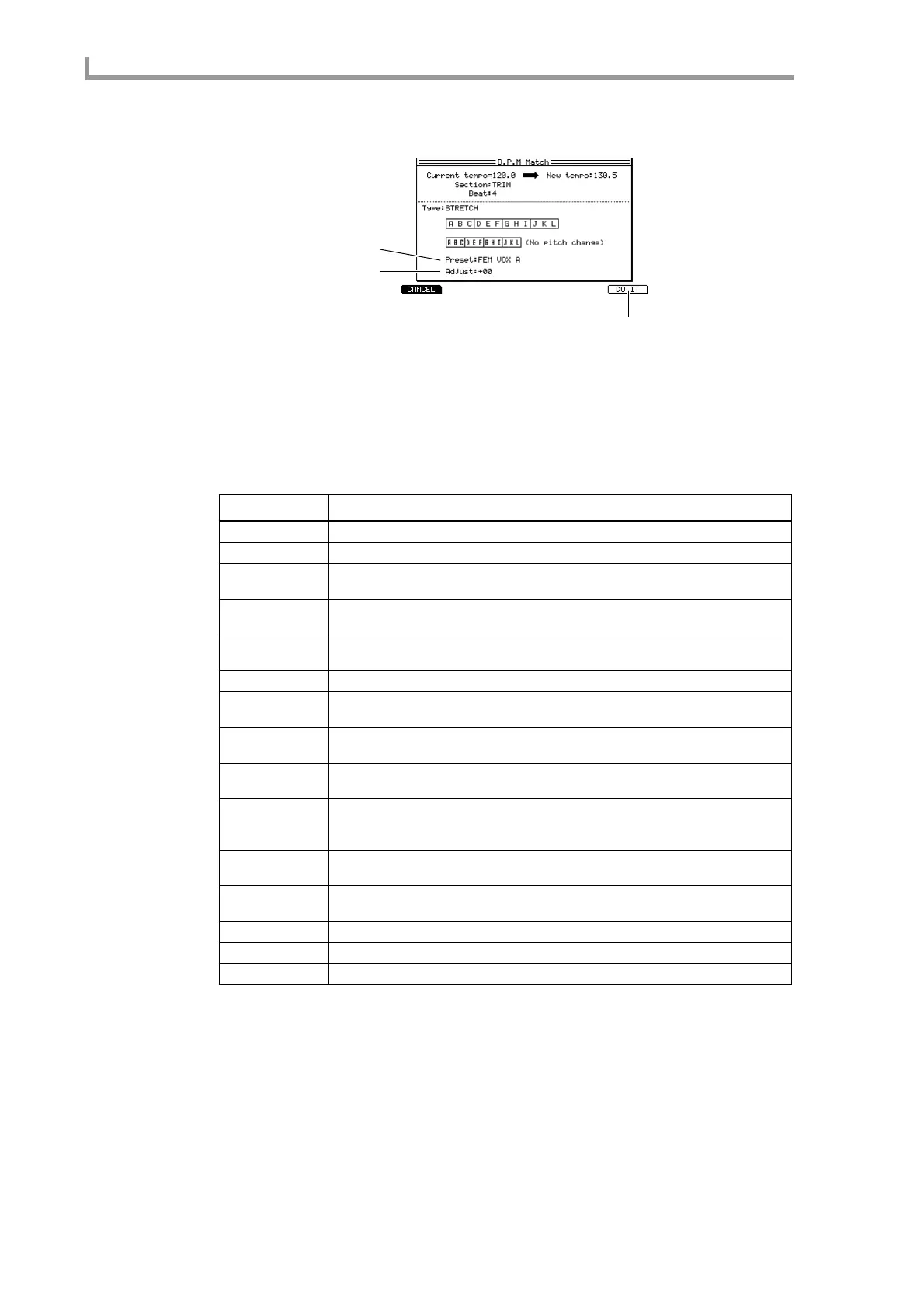Sample mode
182
If you select STRETCH
A Preset field
Selects how time stretch will be performed. The following eighteen presets are provided
so that you can obtain optimal results for different types of sample.
Each preset also provides variations A, B, and C. If you select A, processing will be performed
with normal audio quality. If you select C, processing will require more time, but the audio
quality will be higher. B is mid-way between A and C in processing time and audio quality.
B Adjust field
Makes fine adjustments to the tonal quality. Adjusting this in the positive direction will
give priority to the tonal quality of the high-frequency range, and adjusting this in the
negative direction will give priority to the tonal quality of the low-frequency region.
C [F1] key (CANCEL)
Cancels the time stretch command and closes the popup window.
D [F6] key (DO IT)
Executes the time stretch command and closes the popup window.
4. To execute the tempo change, set the various fields and press the [F6] key (DO IT).
SPEECH 1 Suitable for female speech.
SPEECH 2
Suitable for male speech.
SPEECH 3
Suitable for low-pitched male speech.
VOCAL
Suitable for vocal-only samples, either solo or ensemble. Also suitable for processing
backing vocals.
DANCE 1
Suitable for rhythmic material that contains no bass component or very brief bass
components.
DANCE 2
Suitable for rhythmic material that contains brief bass components with significant
mid-range or wide-range components.
DANCE 3
Suitable for rhythmic material that contains extended bass components.
PERC 1
Suitable for rhythmic material such as drum solos. Not suitable for material that includes
bass component.
PERC 2
Suitable for percussive material. Processing can be performed even if the material contains
bass components.
HI NRG
Suitable for percussive and staccato rhythmic material that includes a broad frequency
range of components. (Not suitable for material that includes extended bass components.)
BALLAD
Suitable for sustained material with extended low-frequency components. Musically
speaking, this is appropriate for slow ballads, and is ideal for processing long bass notes.
However if the material contains percussive sounds, flamming (double strikes) will occur.
ROCK 1, 2, 3
Suitable for a broad range of rhythmic musical styles that contains a wide-range bass and
high frequencies.
SWING
Suitable for material that includes a broad frequency range but is not excessively
percussive.
ALLEGRO 1
Suitable for dynamic string orchestras that contain high-frequency components.
ALLEGRO 2
Suitable for string orchestra sounds that emphasize the low-frequency range.
ADAGIO
Suitable for slow orchestra sounds that contain long sustained tones.
1
2
3

